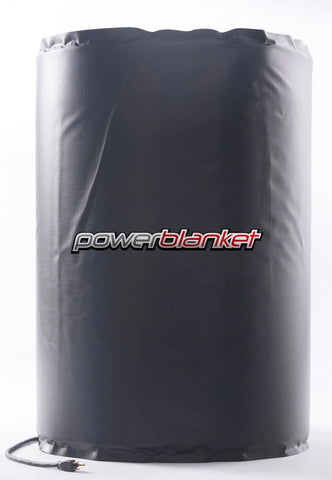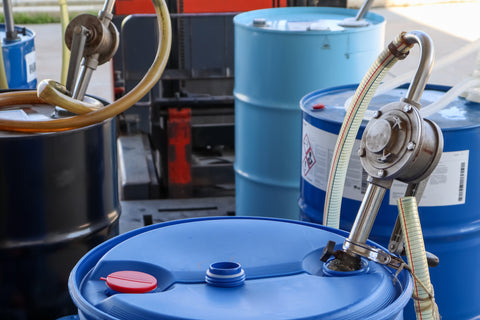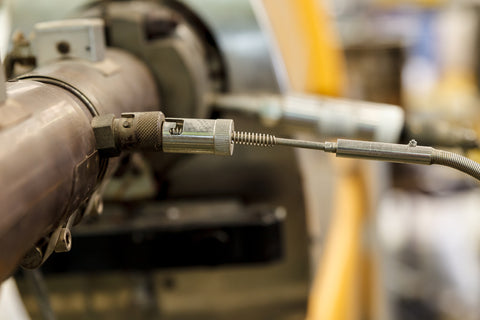Introduction: The Critical Role of Acetic Acid Across Industries
Acetic acid, known chemically as ethanoic acid, plays a pivotal role across a multitude of industries, from chemical manufacturing to food processing. This versatility underscores the necessity for precise temperature control, especially when stored in 55-gallon drums, to ensure both safety and efficacy.
Comprehending Acetic Acid
Chemical Properties of Acetic Acid
Acetic acid, also known as ethanoic acid, is characterized by its unique chemical properties, including a distinct boiling point, freezing point, and dielectric constant. These characteristics are crucial in understanding its liquid phase, as well as dictating its handling and storage protocols. Glacial acetic acid, a concentrated form of acetic acid, exemplifies the compound's purity and strength, highlighting the importance of careful management in acetic acid production processes.
The process to produce acetic acid, whether through synthetic routes or biological fermentation, emphasizes the need for precision to attain pure acetic acid. This purity is essential for its application across various industries, ensuring that the acetic acid meets the specific requirements for industrial use. The production of acetic acid, therefore, not only requires a deep understanding of its chemical properties but also a meticulous approach to maintain its integrity and effectiveness in its various applications.
Industrial Applications of Acetic Acid
In the realm of chemical production, acetic acid is indispensable, serving as a precursor to vital compounds such as acetic anhydride and methyl acetate. Its role as a solvent is pivotal, facilitating the synthesis of a myriad of chemicals, notably through processes like the Monsanto process. This versatility extends to the production of carboxylic acids, where acetic acid's reactivity and solvent properties are leveraged to produce a wide array of derivatives used across various sectors.
Furthermore, the application of acetic acid stretches into the realm of textiles and plastics. In textile manufacturing, it is utilized as a mordant, helping in the dyeing process by ensuring that dyes firmly attach to the fabrics. In the plastics industry, acetic acid plays a role in the production of vinyl acetate monomer, a key ingredient in making polyvinyl acetate (PVA), which is used in adhesives, films, and coatings.
Notably, in the asphalt industry, acetic acid contributes to producing acetic anhydride, which is used to modify asphalt, enhancing its durability and resistance to environmental stresses. This application underscores acetic acid's value in improving infrastructure materials. To improve emulsion acetic acid can be heated in it's barrel before adding it to asphalt mixtures.
In the food industry, acetic acid's pivotal role is highlighted by its contribution to flavor and preservation as the main component in vinegar. It's essential in pickling, extending the shelf life of various foods by inhibiting bacterial growth. Additionally, its use in beverage production and as a natural preservative showcases its versatility.
Challenges in Heating Acetic Acid
Temperature Sensitivity and Safety Concerns
The heating of acetic acid, particularly in large quantities like those found in 55-gallon drums, presents unique challenges. Temperature sensitivity and the potential for combustion necessitate careful management to prevent accidents and ensure safety.
How does temperature affect acetic acid?

Temperature affects acetic acid by influencing its physical state, solubility, and reactivity; higher temperatures can increase its vapor pressure and solubility in water while also potentially accelerating chemical reactions in which acetic acid is involved.
Concentration and Purity Considerations
The concentration of acetic acid, especially in its glacial form, demands precise temperature control to maintain its purity and effectiveness. This is paramount in avoiding alterations in its chemical structure and ensuring the retention of its desired properties.
Heating Solutions for 55 Gallon Drums
Technologies for Optimal Heating
Addressing the heating needs of acetic acid in 55-gallon drums requires advanced technologies. These systems must accommodate the acid's liquid phase and ensure uniform temperature distribution without compromising safety.
Best Practices in Acetic Acid Temperature Control
Implementing best practices in the heating process involves continuous temperature monitoring and avoiding excessive heat. This careful approach ensures the integrity of the acetic acid, preserving its quality and safety.
Success Stories in Various Industries
Chemical Production
In chemical production, the precise control of reaction temperatures through the use of catalysts has proven essential. These practices enhance production efficiency and ensure the quality of by-products and main components.

Food Processing
The food industry's reliance on acetic acid necessitates stringent standards. Controlling acidity levels and maintaining food grade purity is crucial in producing high-quality foods, showcasing the importance of tailored heating solutions.
Ensuring Safety and Efficiency with Proper Heating Solutions
The optimal heating of acetic acid in 55-gallon drums is a critical consideration across various industries. The choice of appropriate heating solutions is fundamental to ensuring safety, preserving chemical integrity, and maintaining efficiency in acetic acid's diverse applications.








